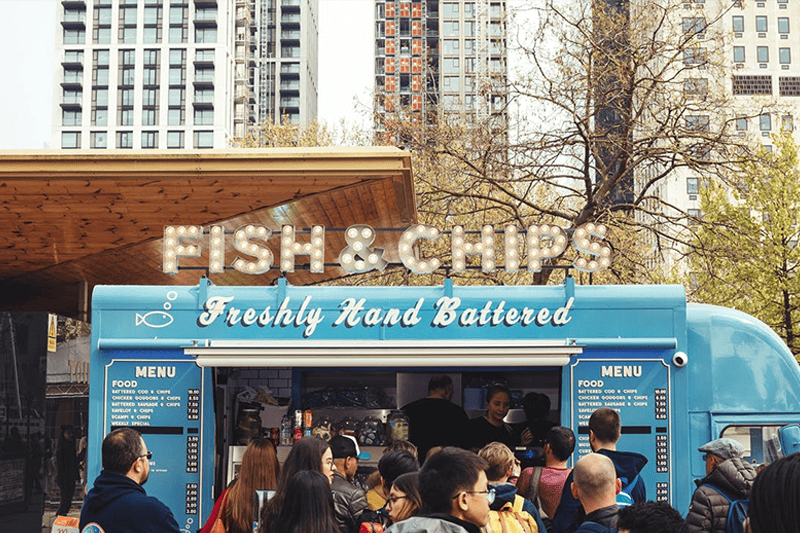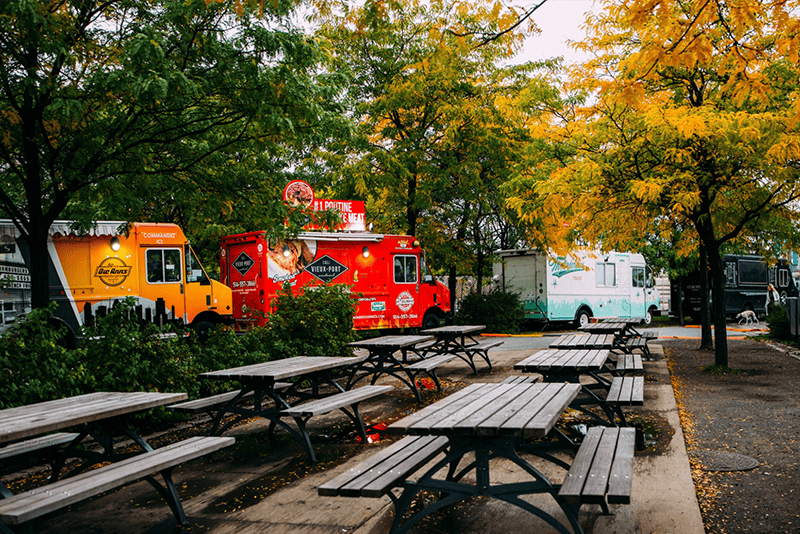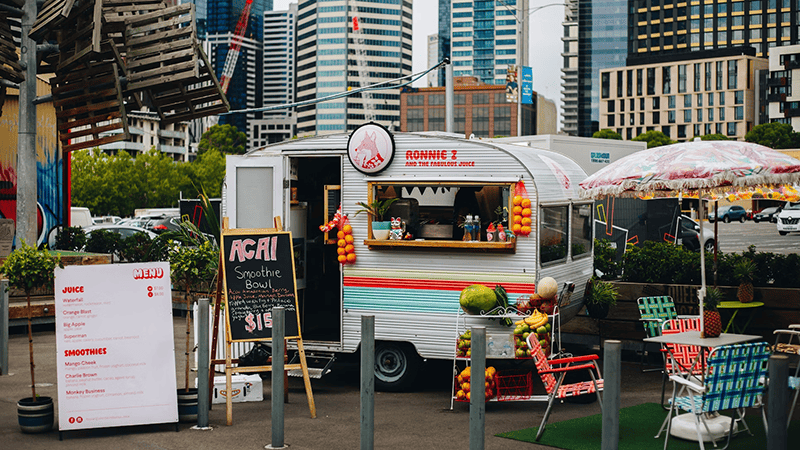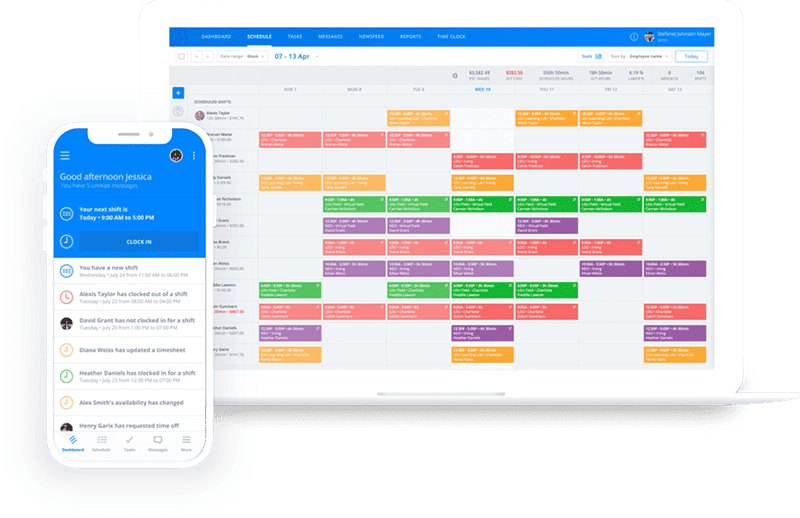Restaurant Business Plan: What To Include, Plus 8 Examples
Do you want to ensure the success of your new foodservice endeavor? Write a rest...

Do you want to give your new mobile eatery the best chance for success? Write a food truck business plan.
In this article, the experts at Sling tell you why a business plan is vital for both new and existing businesses (of all kinds) and give you tips on how to perfect this important document.

As the name suggests, a food truck business plan is a written document that details your food truck’s goals and the measures you will take to make those goals a reality.
At its most basic, a business plan (for any type of operation) describes a comprehensive picture of the organization itself, including:
We’ll go into more detail about the structure of a food truck business plan — and what to include — later on in this article. But first, let’s discuss why a business plan is vital for your company.

A food truck business plan is vital for any fledgling food truck business because it is very difficult to obtain outside funding from an investor or bank without one.
Many investors and banks won’t even consider the possibility of providing working capital if you don’t have a business plan to back it up. And without crucial resources of this kind, your food truck operation may never make it out of the garage.
Even if operational capital isn’t your main concern, a business plan provides you with clear direction on how to translate a general strategy into an actionable plan for reaching your objectives.
The information can help clarify every aspect of your food truck business — from day-to-day functional strategy to mid-level business strategy all the way up to long-term corporate strategy.
Think of your business plan as a blueprint — or roadmap — that guides your actions when business is running smoothly and when it isn’t.
Now that you know what a food truck business plan is and why it’s so important, let’s take a look at what to include in your plan.

The basic structure of a comprehensive food truck business plan typically starts with a cover page and table of contents. You can get as fancy as you want with the cover page, but simple — just the business name, address, and contact information — is effective as well.
After that, you can jump right into the meat of the plan with these important sections.
The executive summary gives the reader a brief introduction to the main elements of your business, such as:
This introductory section of your plan serves to pique the reader’s interest and make them want to investigate further.
Keep in mind that each element within the executive summary should be as brief as possible. You will provide more detail in other parts of the document.
The mission statement section of your business plan is a short statement with the following information:
Some of that information you may not have thought about yet — the company vision, for example — but it can be useful to do so and include a few words to that effect in your mission statement.
You may also find it valuable to write a bit about your company’s values and philosophies so that you and your team members have an idea of what your business stands for.
In the business description section of your plan, provide detailed information about the who, what, why, and how of your food truck.
Include such details as:
It’s also helpful if you include your food truck’s short- and long-term goals as well as how you intend to go about reaching those goals.

A business environmental analysis (or environment analysis for short) is an examination of internal and external factors that could affect a company’s success.
These factors typically fall into one of six categories:
These six categories make up what’s known as the PESTLE Method (see the first letter of each word) for creating a business environmental analysis.
Within each broad category are more specific variables that may affect your business, including:
Including these variables in your business plan can help you paint a more accurate picture of how your business will operate within the world around it.
SWOT is an acronym that stands for Strengths, Weaknesses, Opportunities, Threats.
A SWOT analysis (a.k.a. SWOT matrix, situational assessment, and situational analysis) is a strategic planning, implementation, and management technique that owners and managers can use to identify variables that affect their business.
It’s broken into two distinct categories: internal and external. Strengths and weaknesses are internal, while opportunities and threats are external.
With those categories in mind, you can use the SWOT method to examine:
Identifying these variables before opening your doors can help you plan and prepare for the future.
The industry background section of a food truck business plan is an overview of the niche in which you want to operate and a summary of your business’s position within that niche.
As a general rule, this section may answer some of the following questions:
This is just a small portion of what you may choose to include in the industry background section of your business plan.
You might start out with just a brief overview of the industry in question but, eventually — perhaps when you have a bit of experience under your belt — you’ll want to include as much information as possible.
Adding to this section of your business plan as you go along can help you identify new ways to position your food truck for success.

This is the place to assess the strengths and weaknesses of your current and potential competitors. Doing so can help you create both an offensive and defensive strategy that you can use to get a leg up on other food trucks in the industry.
If you don’t examine your competitors thoroughly (or systematically) enough, you may wind up with blind spots that can leave you at a serious disadvantage.
If this portion of the business plan seems outside of your wheelhouse, you may consider hiring a market research firm. They have the knowledge, skills, and tools to get the job done as quickly and as accurately as possible.
A market analysis is a brief introduction to three different views of the niche you want to enter:
Again, this section should be a brief introduction to these concepts. You can — and should — expand on them in their own individual section.
A marketing plan is an outline of the advertising and marketing efforts you plan on executing in order to make your food truck visible to its target market.
A significant part of any marketing plan are the eight Ps:
You’ll also want to include a projected budget of expenses that apply to the marketing efforts you plan to put in place. This can help prevent your business from overspending on marketing during the difficult first days, weeks, and months of operation.

The operations plan is the place to describe the specific steps you’ll take to reach your objectives and goals.
A good operations plan includes plenty of details regarding the who, what, where, when, and how much of your business (you may have touched on these in the business description section, but it can be helpful to provide more detail on them in this section) .
These aspects of your business describe things like the personnel who are in charge of specific tasks, where daily operations will take place, a timeline for when business goals and tasks will be completed, and dollar amounts allocated to these activities.
Even if you’re the only one working in your food truck right now, it can still be a good idea to build an operations plan — even a rudimentary one — in preparation for future growth and investment.
A management summary is a description of the reporting and relationship hierarchy within your food truck business.
In the early stages, you may be the sole employee and be responsible for every aspect of the operation. But, at some point, that may change as you hire new team members, add other vehicles, and expand into different markets.
You’ll want to be prepared for this growth, so it’s a good idea to create a management summary before things get going.
That way, you’ll know who is responsible for every aspect of the business, and your team will know who to approach with questions or problems.
Again, you may not need all of this information right away, but it can be beneficial to put it down on paper now so you don’t have to spend time thinking about it once your business gets going.
Just because this section is further down in your food truck business plan doesn’t mean that it is any less important. In fact, it is one of the most important components for securing outside funding from investors, banks, and other sources.
We recommend hiring a trained accountant to help you prepare this section so that it will be as detailed, accurate, and informative as possible.

In pretty much every way that counts, a food truck business plan is the same as a restaurant business plan. A mobile eatery and a brick-and-mortar eatery are both food service operations, and they both deal with similar variables.
So, if you’re having trouble wrapping your head around your food truck business plan, take some time to branch out and research restaurant business plans as well.
Get started with this article from the Sling blog: Restaurant Business Plan: What To Include Plus 5 Examples.
As you research, think of the business plan as a “road map” that shows you, and those who work with you, how to translate general strategies and ideas into actionable steps for reaching your business goals.
When you view your business plan as a map to success — as something that will guide you when things are going smoothly and, perhaps more importantly, when they aren’t.
With such a plan in place, you’ll be better prepared to develop everything from the boots-on-the-ground functional strategy to the mid-level business strategy all the way up to the driving-force corporate strategy.

After you’ve created your food truck business plan, it’s time to make it a reality.
One of the biggest challenges in ensuring that your food truck runs smoothly and successfully is managing and optimizing your team.
Whether you have one employee, 10 employees, or 100 employees, you’ll need to give some thought to how you’re going to schedule your staff.
Ask yourself these questions:
The Sling app can help you find solutions to those questions and conquer the challenge of managing and optimizing your workforce.

Sling not only includes powerful and intuitive artificial-intelligence-based scheduling tools but also many other features to help make your workforce management more efficient, including:
With Sling, you can schedule faster, communicate better, and organize and manage your workforce from a single, integrated platform. And when you use Sling for all of your scheduling needs, you’ll have more time to focus on bringing your food truck business plan to life.
For more free resources to help you manage your business better, organize and schedule your team, and track and calculate labor costs, visit GetSling.com today.
See Here For Last Updated Dates: Link
This content is for informational purposes and is not intended as legal, tax, HR, or any other professional advice. Please contact an attorney or other professional for specific advice.
Schedule faster, communicate better, get things done.